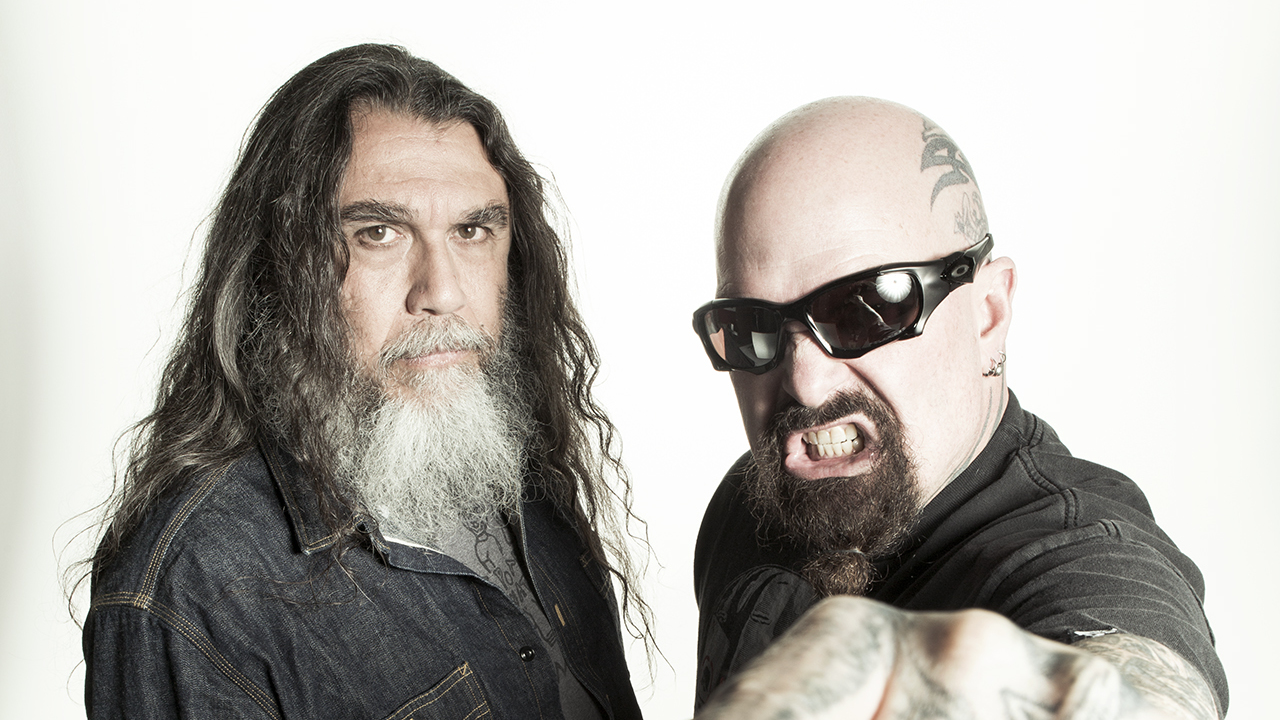“If you cherish your sanity, this band is not for you. Spend one evening with Slayer and you will lose your perspective on what is real or imaginary. Slayer is out to warp your brain, move your feet, and raise your spirits. Their weapon: pure ass kickin’ rock and roll.”
So runs the mission statement on one of Slayer’s flyers from 1982, when Tom Araya, Kerry King, Jeff Hanneman and Dave Lombardo were hungry teenagers, cutting their teeth onstage at local hangout The Woodstock in Anaheim. Two weeks earlier, they’d opened there for SoCal’s local heroes, Metallica; within another week they’d ditch the “ass kickin’ rock and roll” and headline their flyers with a far more suitable line: “The Heavy Metal Nightmare Begins.”
Fast-forward 33 years and Slayer are celebrating the release of their 11th studio album, Repentless, and the brutal, blood-spattered video to the blistering title track, which is set in a prison where the inmates have gone feral. Although only 50% of that original lineup remains, Slayer are still pushing the envelope of shock horror that’s been their raison d’être. As they prepare to bring their live assault to the UK in November, we look back at their hellraising origins.
As soon as Slayer started outgrowing their pub rock cover band origins, they zeroed in on a sound, look and attitude that was all about speed and aggression, darkness and evil, rebellion and extremity. At first, they struggled to gain attention, though they played with some of the genre’s future luminaries.
“It took a minute, because we were pretty new,” reasons Kerry, before a tipping nod to his band’s esteemed contemporaries. “Metallica paved the way. We played with them at Woodstock – that was with Mustaine on guitar. They were probably six months ahead of us, and when they moved on [to the Bay Area] we were the thrash band in LA.”
The real breakthrough, Tom Araya recalls, was when Metal Blade head honcho Brian Slagel approached Slayer about contributing a song to his LA label’s Metal Massacre III sampler in 1983.
“The only influence that played a part in becoming what we became was listening to the first Metal Massacre album and thinking, ‘We can play faster and heavier than this shit!’” laughs Tom. “We thought we could do better, so we did.” Tom traces the true birth of Slayer as a self-possessed entity to the track they recorded for it – Aggressive Perfector. “It started with that song,” he asserts. “We rehearsed it 100 times. And we liked it so much, we rewrote a lot of originals that we had and changed the image of the band. That’d be the one time we said: ‘This is the direction we’re going in.’ Prior to that, we didn’t know what we wanted to do. We just did it!”
In ’82, no other band in the US looked or sounded as extreme as Slayer.

Where Metallica played in jeans and t-shirts, Slayer took the stage in leather, nail wristbands, eye paint and inverted crucifixes, snarling about The Antichrist, and even proclaiming themselves ‘LA’s only black metal’ on a 1984 flyer. There was an element of one-upmanship about their concertedly extreme style of music and presentation, and a friendly but intense rivalry with their fellow thrash pioneers. Brian Slagel, who signed them to Metal Blade, remembers it clearly.
“Metallica and Slayer were in constant competition,” he asserts. “Each wanted to know what the other was doing. Metallica would release something and Slayer would ask me how heavy it was. Slayer put out a record, and Metallica asked if it was faster than them. I’m sure this rivalry inspired Slayer to get more and more extreme; they were always looking to push the envelope.”
As well as trying to outdo like-minded peers, Tom and Kerry agree that much early impetus for Slayer’s aesthetic was their contempt for 80s LA rock trends.
“Hollywood was so glam,” rues Kerry. “Mötley Crüe was big, Ratt was coming up, so we were almost exiles in Orange County. But we wanted to be there! We made ourselves the anti-LA band.”
“That’s why we had black eyeliner: we didn’t want to look like girls, we wanted to look like guys putting on bad make-up!” chuckles Tom. “We wanted to be so far from what Hollywood was.”
“It was totally going against what all those bands were doing,” agrees Brian, recalling his besotted first impression of Slayer live. “Super heavy, so fast… it was the most extreme thing I’d heard… there was nothing else like them.”
As well as outpacing the competition and reacting against poodle-permed cock-rockers, Slayer’s early shock tactics were about intensifying the presentation of their heroes. “I was big-time into Venom,” enthuses Kerry. “I thought Cronos was the single most evil entity I’d ever seen in my life! I was very inspired by that, as you can tell from our early recordings. On [1983’s] Show No Mercy you can really hear the Maiden and Priest influence, and on [1985’s] Hell Awaits you can really hear the Mercyful Fate, with the longer songs and the plethora of riffs.”

With their extreme appearance and menacing riffs, audiences would assume Slayer were involved in the dark arts, though Kerry would bluntly set them right.
“I’ve always been straightforward; I don’t pretend to be something I’m not,” asserts the guitarist. “So when people come up and talk to us about the Church Of Satan and stuff, I’m like, ‘You’re talking to the wrong dude. You might want King Diamond, not Kerry King!’ I’m an atheist – I don’t believe in either of them. I tried writing a song about atheism but the dark, Satanic-inspired songs are more compelling! I don’t care what you believe in, as long as you’re open to listening to what I have to say. I don’t care if you think a unicorn is Jesus Christ – everybody should have the ability to make up their own mind about whatever they want to do or believe. Perspectives are valuable whether they’re mine or not.”
The image that most iconically sums up the transgressive extremity of early Slayer is the late-’83 promo shot of the band slavering over a prostrate, half-naked girl covered in blood (in fact Jeff’s 16-year-old wife-to-be, Kathryn).
“That was probably the only time they had trouble across the board with the metal media,” says Brian. “Loads of magazines found the photo too offensive to print. Otherwise, their only problems were with the club owners who couldn’t deal with how crazy the kids would go at the shows. We had real problems with the clubs in LA. They’d never seen kids moshing, so they’d put in extra security when Slayer played. But by putting in lots of heavy-handed security, they made things worse. They were provoking the fans, who reacted as you’d expect. And so Slayer got banned from a lot of clubs.”
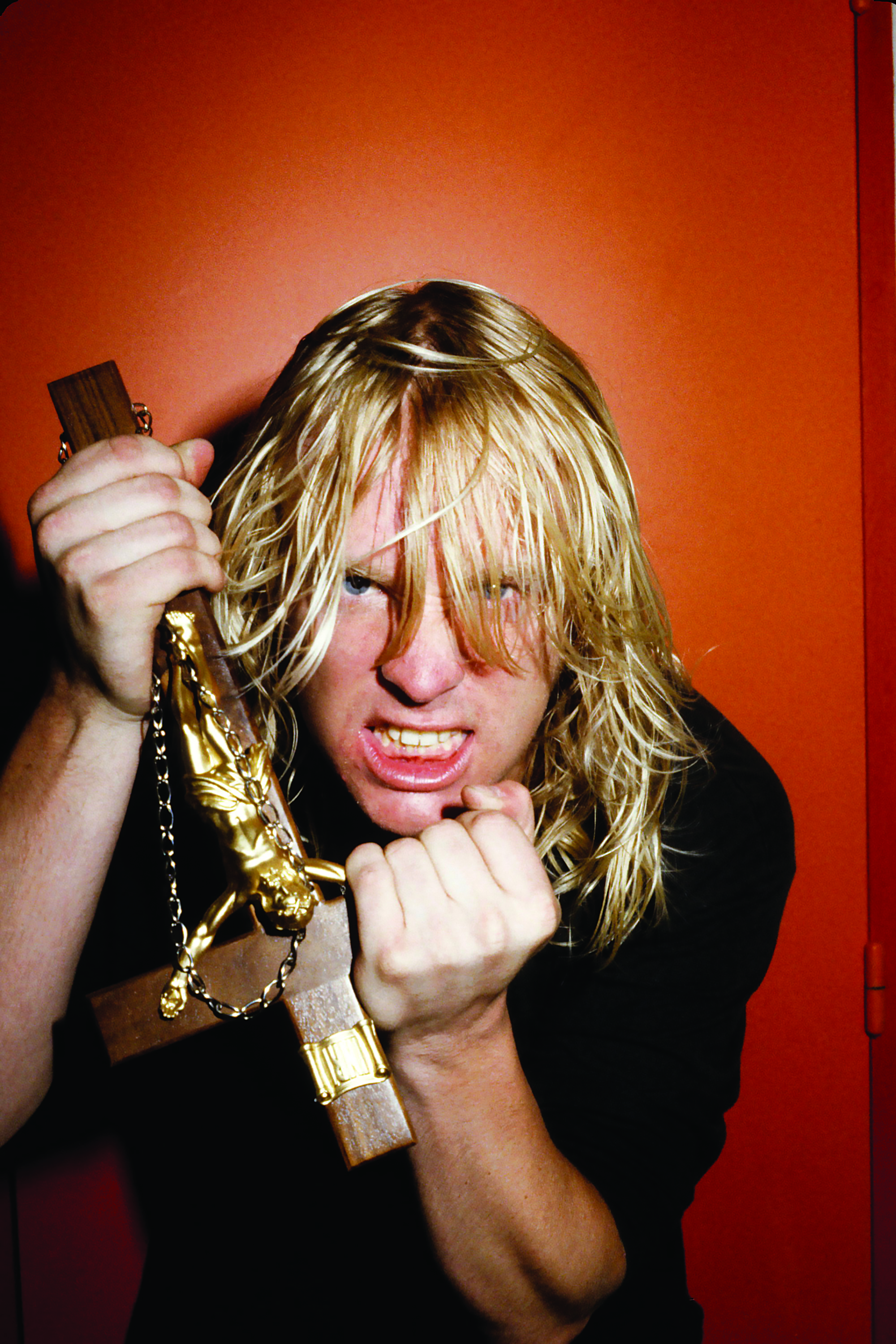
Outside of the metal world, Slayer fell foul of the PMRC (Parents Music Resource Center), a committee of busybodies who capitalised on the 80s moral hysteria about the influence of ‘adult’ themes in youth culture by pressuring labels to include warnings on record sleeves. They singled out choice lyrics from Slayer’s 1985 classic Necrophiliac: ‘I feel the urge, the growing need, to fuck this sinful corpse / My task complete, the bitch’s soul lies raped in demonic lust.’
It’s tempting to see the PMRC and the ‘Satanic panic’ as a direct reaction to the envelope that Slayer were pushing; they set out to shock, horrify and outrage, and they succeeded. However, the band operated outside the mainstream, and their music wasn’t yet widely available.
“Major record stores never stocked their records back then,” recalls Brian. “That wasn’t because of problems with their lyrics or musical extremity; Slayer were just so underground they never registered with the chains. They never thought a band like Slayer would sell.”
When Slayer released Reign In Blood in 1986, with their ‘Parental Advisory’ sticker slapped on the sleeve, they began to attract the ire of religious groups.
“They don’t bother with you until you’re popular,” reckons Kerry. “They don’t want to waste time and money being seen by 10 people; they want to waste it being seen by 1,000 people.”
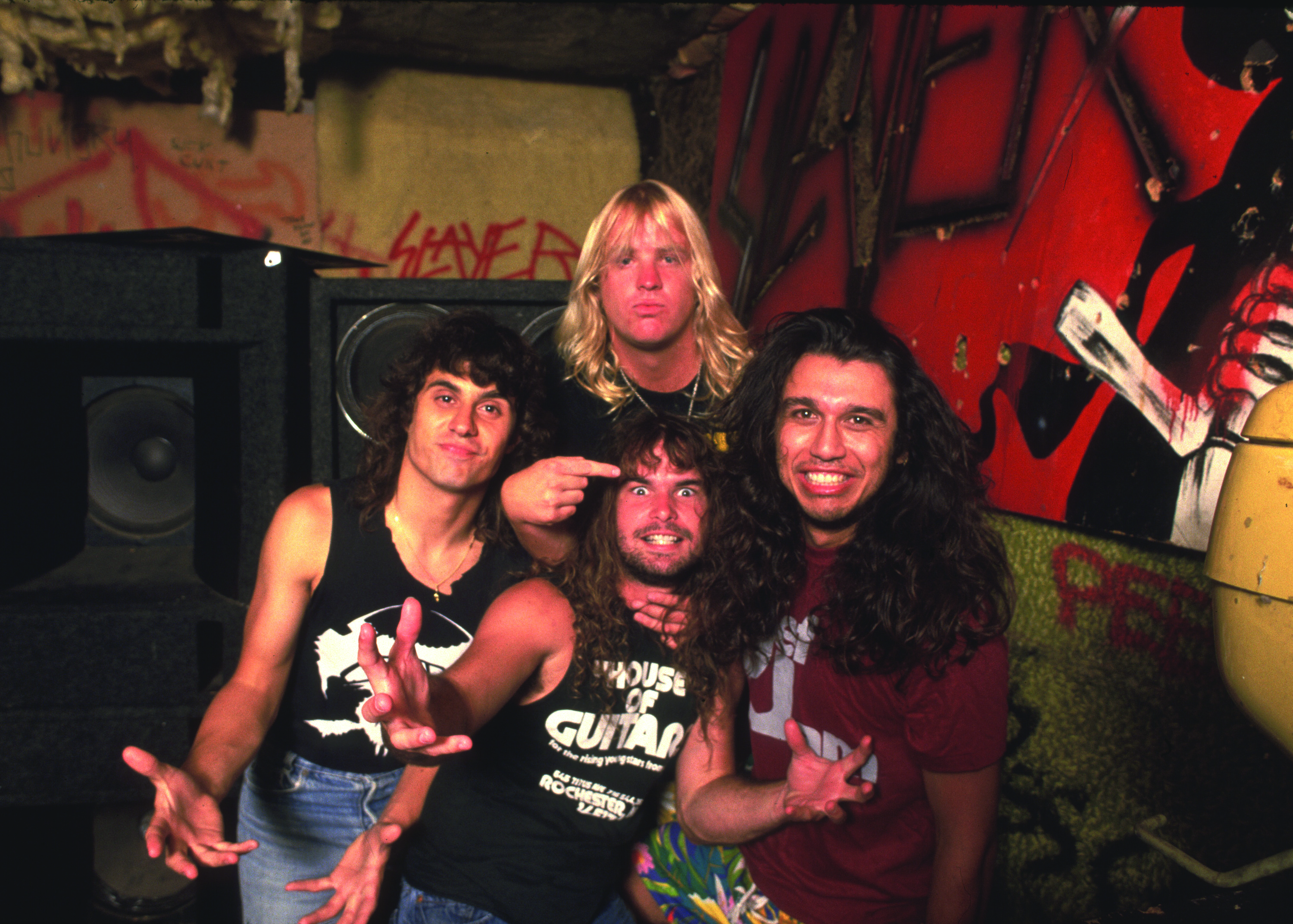
But it wasn’t just Slayer’s riotous fans and theatrical diabolism that courted world infamy. Jeff’s fascination with World War II – extending to a huge collection of military memorabilia – added another layer to Slayer’s brutal aesthetic, and confronted an even more controversial sensitivity.
“Jeff was very into the historical part of it,” Kerry insists. “When we’re at a show, the last place I want to be is on the tour bus, but Jeff would sit on there and watch The History Channel all day! I’ve no idea what the pride of his collection was – there was so much stuff. He collected lifelike war dolls; he had battle scenes set up in cabinets in his house.”
The rest of Slayer didn’t share the obsession, but they incorporated its iconography into the band’s presentation without worrying about repercussions. It’s a part of the band’s personality that persists today.
“You’ll see the emblems and essences of war in our shirts and artwork,” Kerry reasons. “It fits. One thing we had to change, and Kiss had to change as well, was our letter ‘S’, because it resembled the SS logo. It’s funny to me that Kiss got it, because that’s a rock’n’roll band! But I understood, and I can see how it relates to us far more than Kiss. So out of respect, of course we changed it.”
“It wasn’t about controversy,” asserts Tom. “It was more about: people are scared of this stuff, let’s do this stuff!”
Gleefully exposing the darkest depravities of human nature was clearly an end in itself for the rebellious youths. “Part of it is that Slayer, earlier rather than now, was like a taboo band,” muses Kerry. “Taboos have fallen by the wayside for a lot of things, but it was all about saying things that everybody else was afraid to say. We did that purposefully.”
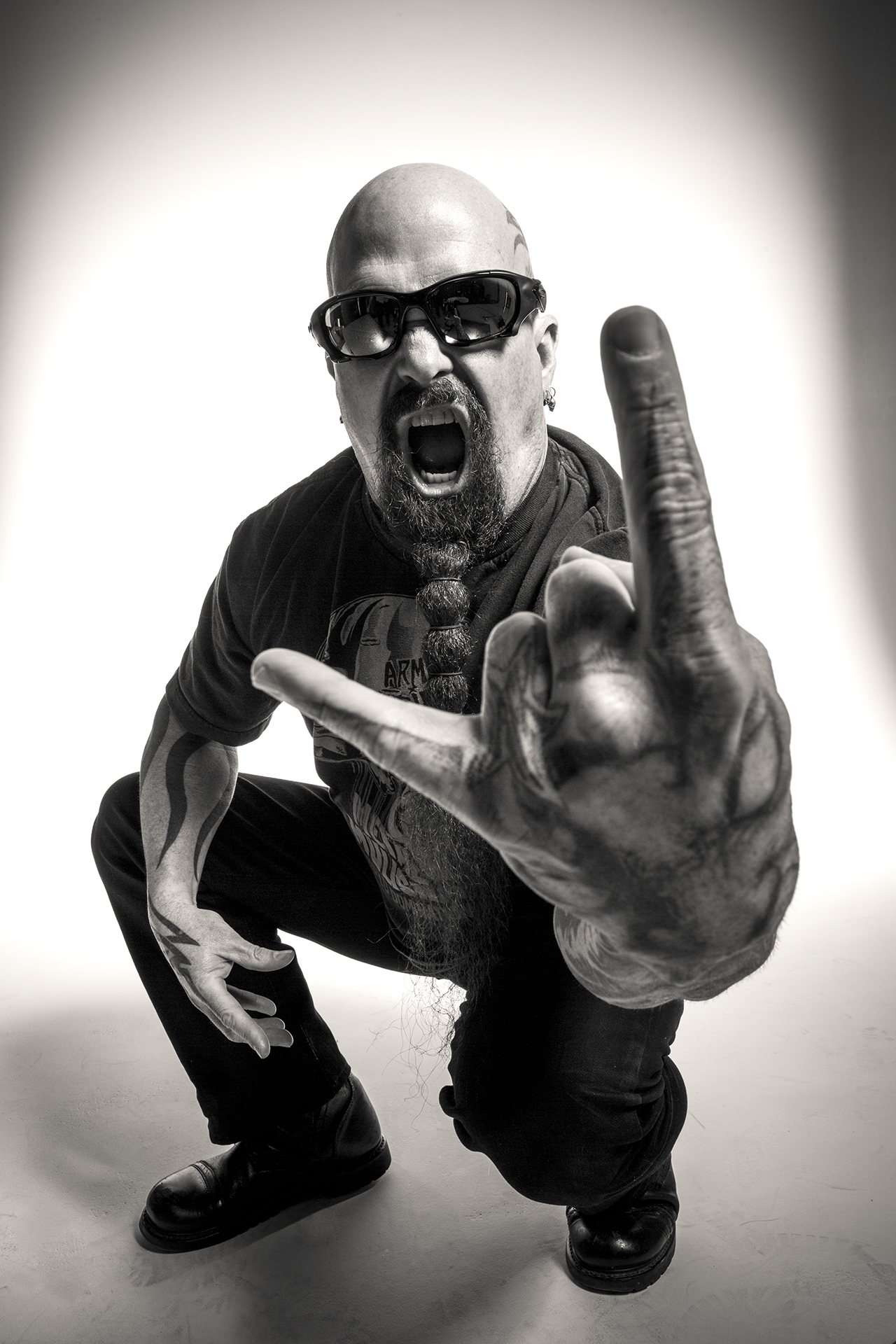
If you cherish your sanity, you need this band. More than 30 years since they began causing riots in venues and pissing off the establishment, Slayer continue to push the boundaries of music and popular culture. And despite seemingly insurmountable odds, their Heavy Metal Nightmare will roll into a town near you soon.
*Repentless* is out now via Nuclear Blast.
EVIL HAS NO BOUNDARIES
More controversial moments from the rest of Slayer’s career.
*1986 Slayer accused of Nazism*
Jeff Hanneman’s classic, Angel Of Death, details horrific experiments conducted in Auschwitz by Josef Mengele. The song’s dispassionate intensity gained Slayer an erroneous reputation as Nazi sympathisers, and distributors Columbia refused to release the album.
*1988 Mandatory Suicide’s artwork banned*
The promo sleeve – depicting a Slayer fan hanging in his bedroom after receiving the call-up to a military academy – was banned. The t-shirt of the same image went on to become one of Slayer’s priciest rarities.
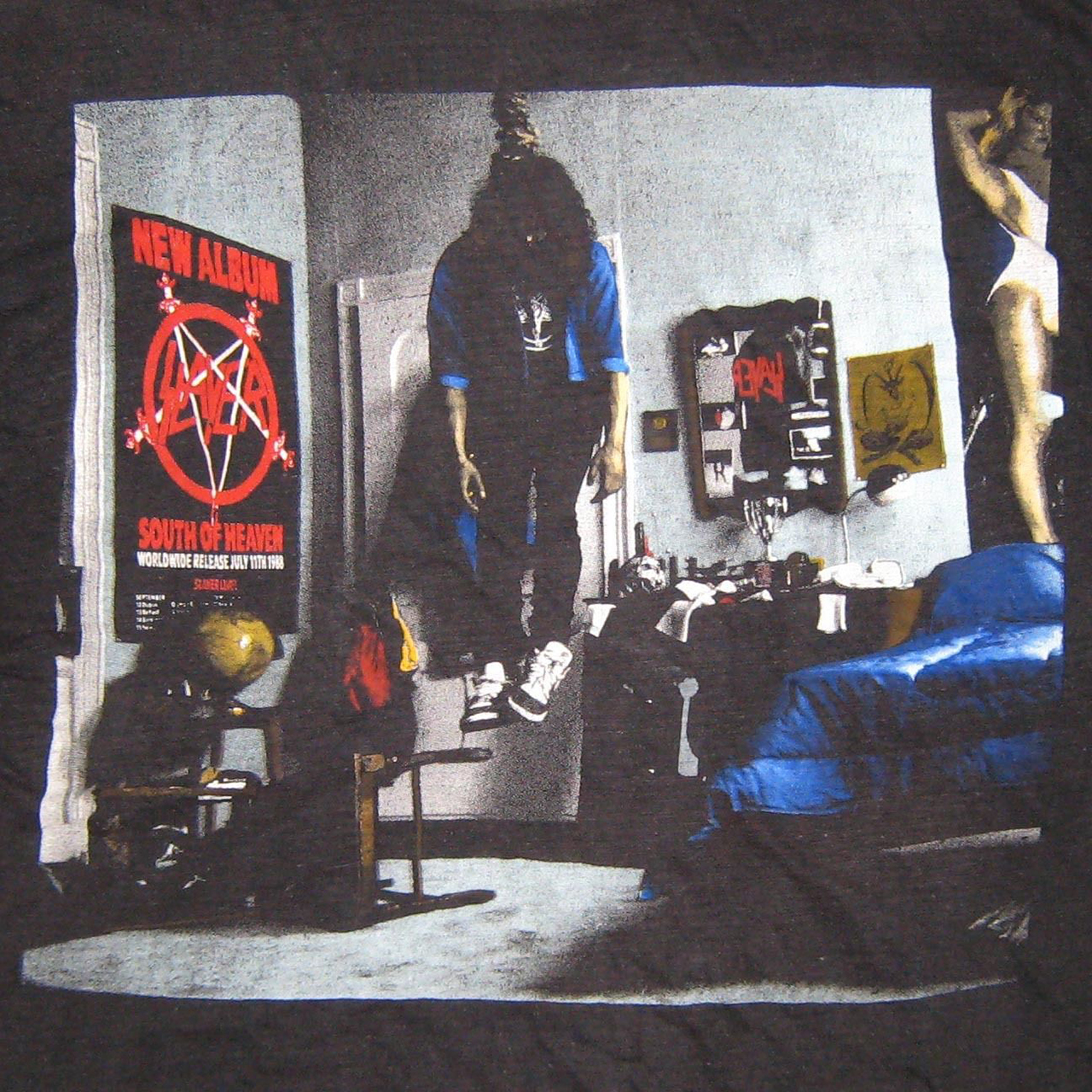
*1990 Dead Skin Mask causes offence*
Dead Skin Mask, on Seasons In The Abyss, concerns America’s original Psycho: grave-robber, murderer and macabre DIY enthusiast Ed Gein. The shock comes at the end of the track, when a small child can be heard, begging to be released.
*1994 Divine Intervention’s sleeve scrapped*
A photo of the Slayer logo, bloodily carved into the arms of an obsessive fan, was intended for the album cover, but was deemed too graphic for certain shops.
*1996 Slayer accused of murder*
The horrendous murder of 15-year-old Elyse Pahler in California was deemed by the victim’s parents to have been inspired by Slayer. The judge disagreed, ruling: “There is not a legal position that could be taken that would make Slayer responsible.”
*1996 Slayer accused of racism*
In their cover, Slayer changed the final line of Minor Threat’s Guilty Of Being White to ‘Guilty of being right’ – later explained as PC-baiting mischief. The song’s writer, Ian MacKaye, was not amused: “That is so offensive to me,” he declared.
*1998 Divine Intervention outlawed in Germany*
The 1994 album was banned in Germany (four years after its release, confusingly) due to the lyrical content of songs such as SS-3, about Third Reich security chief Reinhard Heydrich.
*2006 Christ Illusion art censored*
Described by Kerry King as “Christ in a sea of despair”, the image was banned, recalled and destroyed by EMI in India. In America, a censored version was sent to stores that refused to stock the original.
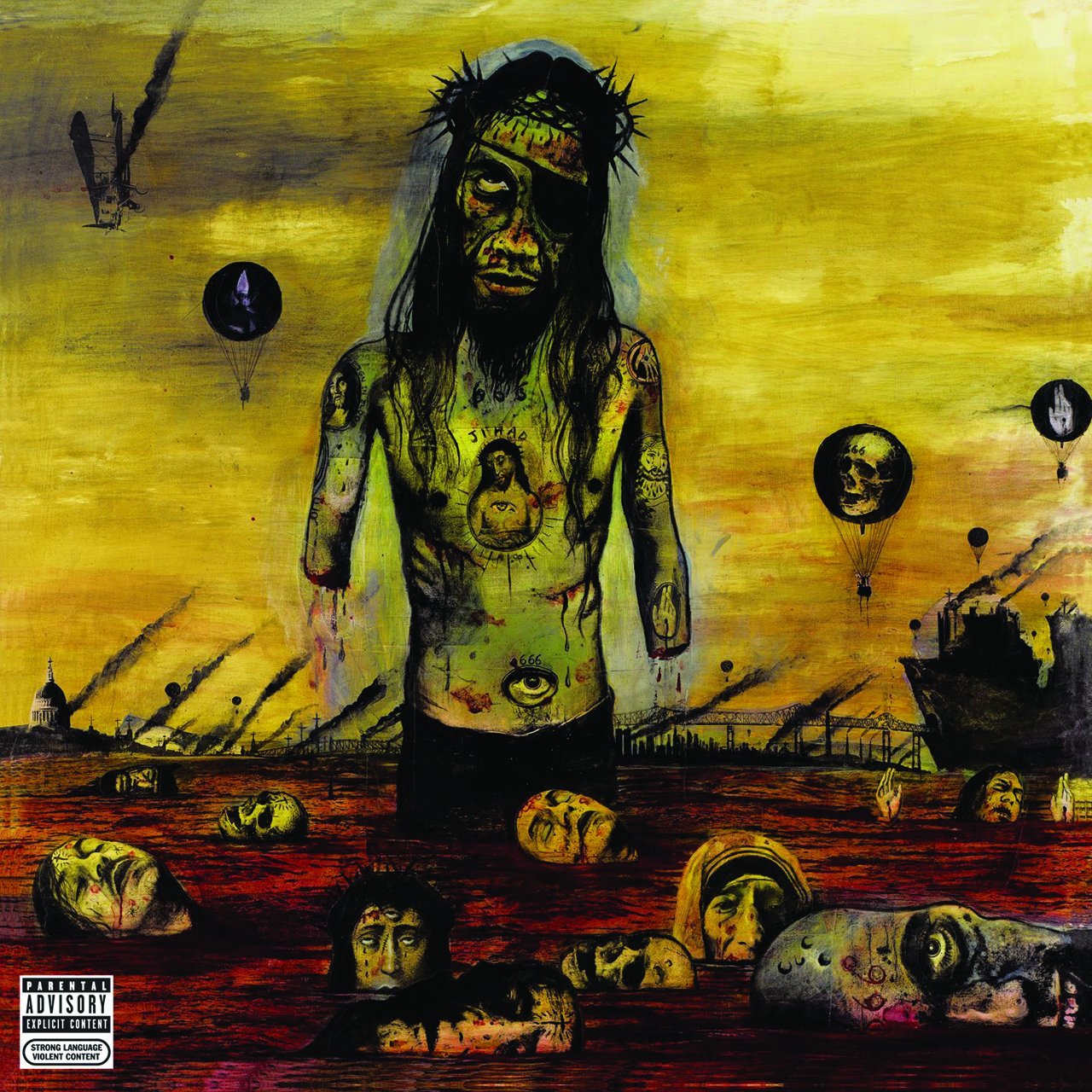
*2006 Jihad touches a nerve*
Slayer got themselves in more hot water for daring to imagine an event from another perspective – in this case, 9⁄11 from the perspective of a suicide terrorist.
